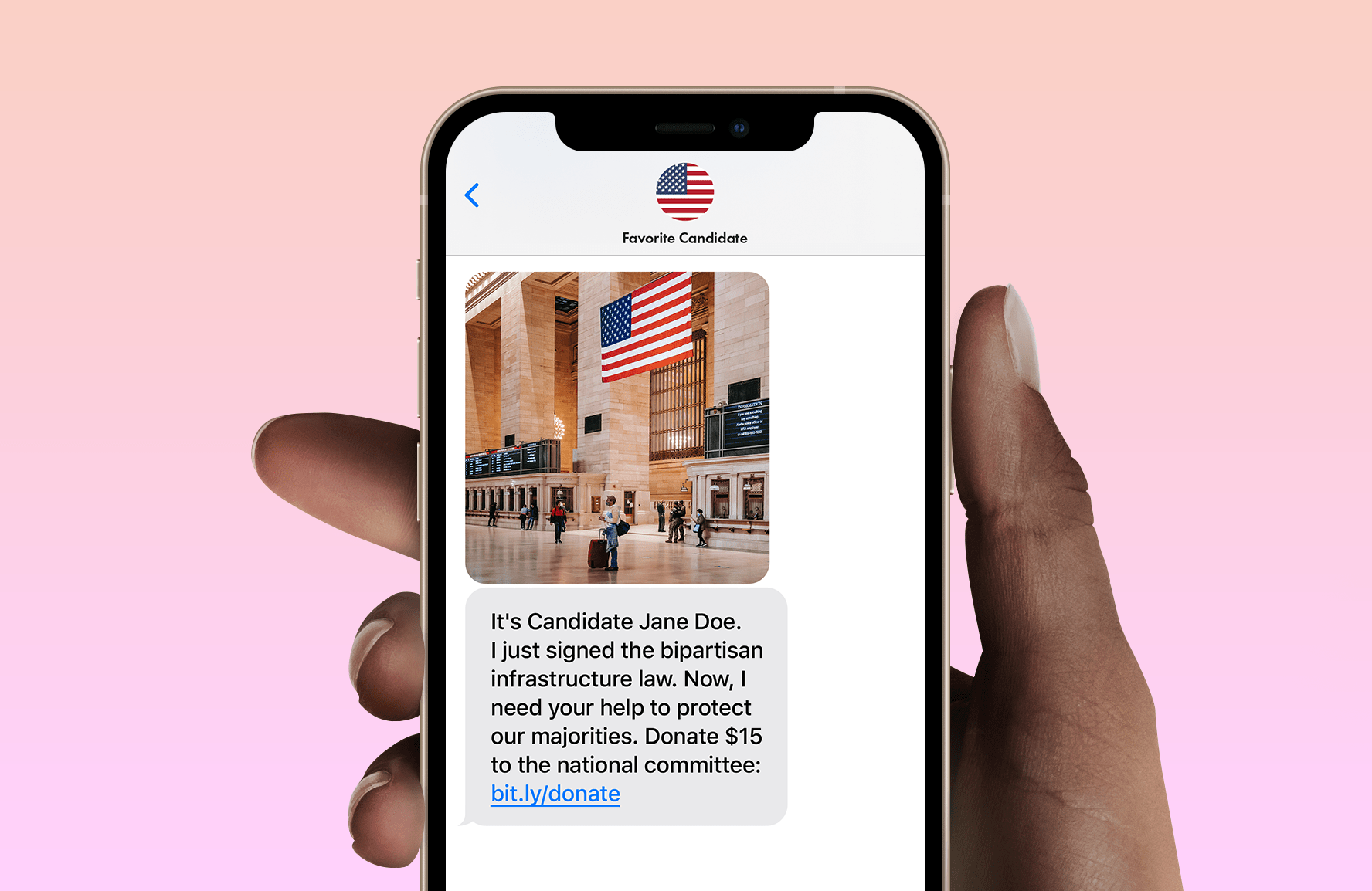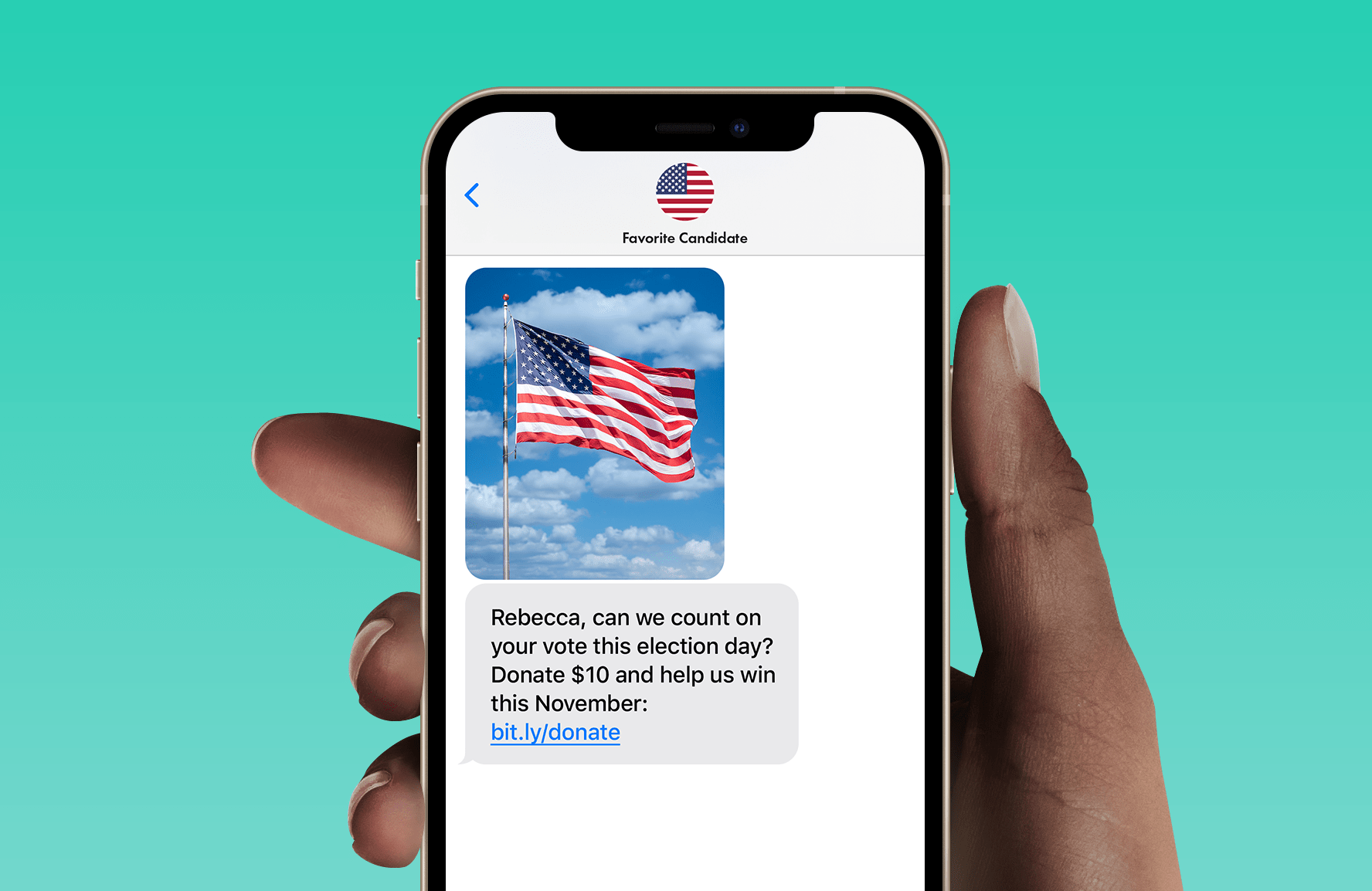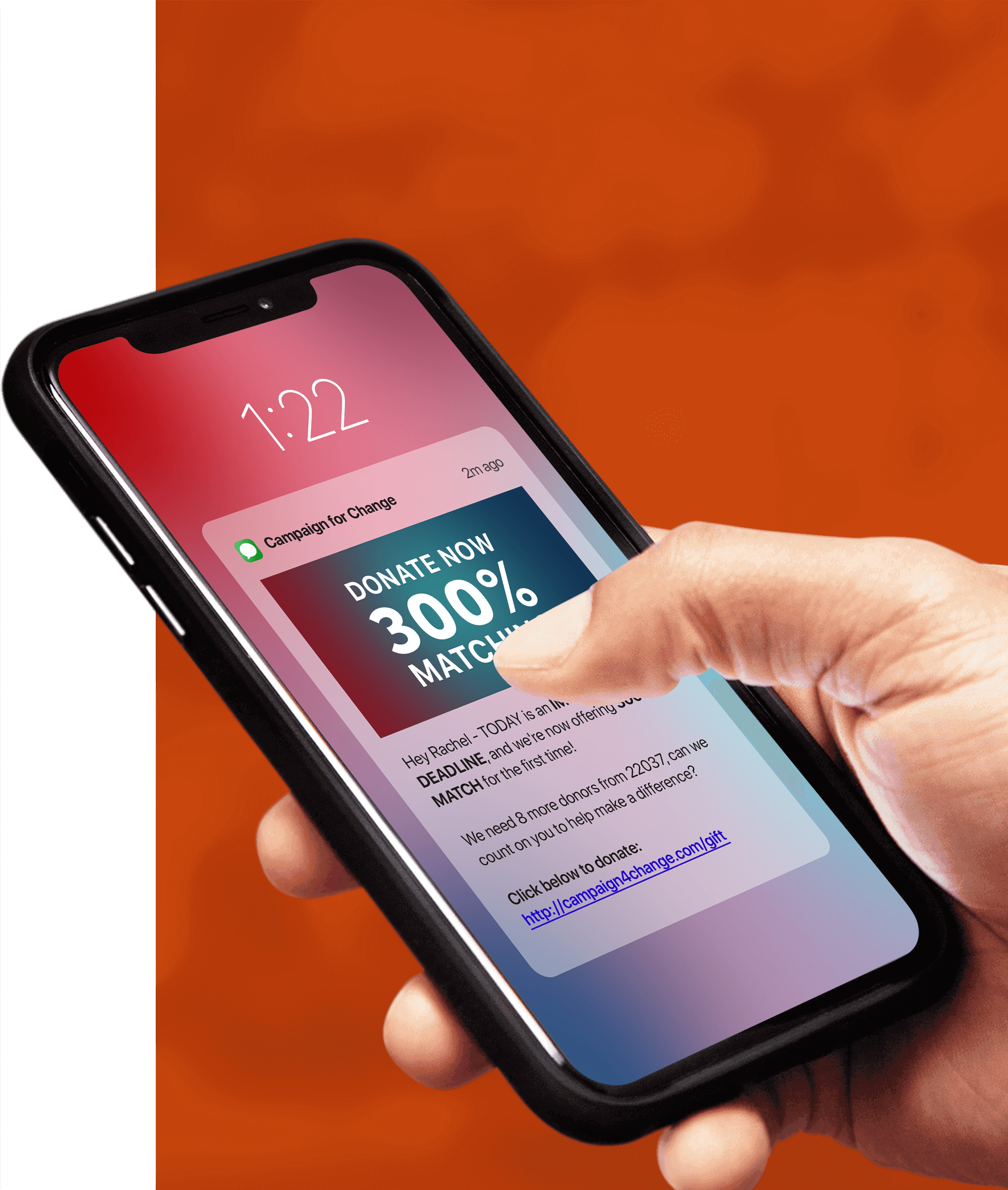
Connecting with voters and potential donors is at the heart of a winning political race and creating a well-funded campaign. It’s vital to use the most effective means of advertising and communication, and right now, one advertising tool is dominating the political world: text message marketing.
Through simple five- or six-digit phone numbers, known as short codes, candidates promote and grow their text messaging subscriber lists. The process is fast and simple. Supporters text in basic keywords, opting in to receive updates. Links to donation platforms and policy issues are one tap away, accessible directly from messages in a subscriber’s text messaging app.
Campaign strategists use SMS messages to rally support, keep voters informed, and bring in large amounts of donations. Many Tatango clients see an ROI of $5 for every $1 invested in text message marketing. Let’s take a closer look at how texting can help you get ahead and win your next election.
Why Texting Works So Well for Politicians
When you’re starting your political advertising push, it’s easy to get overwhelmed with options: billboards and yard signs, TV and radio ads, or mass emails and flyers. However, for many voters, these channels are becoming less and less effective. Emails get lost in junk folders. TV ads don’t reach streaming services or get muted during commercial breaks. If your political ads keep getting lost in the noise of our modern world, your message won’t stick.
This is why SMS marketing is becoming so popular. Almost 2 billion campaign text messages were sent in November of 2020 alone. Campaigns have been relying on texting more and more, especially since it provides a great return on their investment. As mentioned above, on average, every $1 spent on political texts with Tatango brings in at least $5 in support.
Texting also bolsters other forms of communication. Supporters join email lists by texting their email addresses to a short code. Fundraising events are rallied through updates and coordination over SMS messaging. There’s no better way to build and maintain momentum since texting is the most direct way a campaign can stay in touch with voters. Instead of spreading your advertising budget thin, centering your political marketing around political texting will help your team increase a campaign’s reach and win more races.
3 Reasons to Use Political SMS Marketing
Here are three big advantages of SMS messages for political campaigns.
1. Texting Is the Best Way to Reach Most People
According to a recent report, 78% of people say text messaging is the best way to reach them. Particularly in close races, keeping voters updated and engaged is vital. Since texting is the quickest and easiest way to communicate with most people, it should be a top priority for political campaigns. Instead of being ignored in an email folder, texts are almost guaranteed to be read immediately—90% of SMS messages are opened and read within the first three minutes. Data indicates that many of us check our text messages multiple times throughout the day. Campaigns can use this information to their advantage.

Since texting is such an effective way to connect with supporters, it’s also perfect for fundraising…
2. Fundraising Is Easy with SMS Messages
Using integrated political fundraising tools, your campaign can easily ask for single or recurring donations. One-tap links in text messages allow supporters to skip frustrating online forms or lengthy donation portals. Especially when deadlines are approaching, eliminating every possible extra step to donate can make a difference. With Tatango, fundraising is simple and secure.
Campaigns also need long-term donors, especially since races are starting earlier and earlier each cycle. With SMS messaging, campaigns can send out schedule reminders, bringing in donations of all sizes month over month. By integrating these donation requests with news updates and insider messages, candidates can stay in close contact with their supporters.

3. Subscriber Data Enhances Results
When it comes to political texting and fundraising, understanding your base is critical when planning your campaign. In some situations, it’s good to send blanket messages to a subscriber list with millions of phone numbers. But with local votes, volunteer events, deadlines, and more, segmenting that list into groups of recipients is much more effective. Political text messages can be segmented by zip code, voting block, time zones, and other demographic information. Campaign teams can focus their efforts in the right places, using data to inform their decisions.
Having this data is a privilege and a responsibility for campaigns and their partners. Tatango leads the industry in data protection and security. You can rely on the fact that subscriber data is as safe as possible: through automated logouts, two-factor authentication, and other safeguards. Using this guarded data properly ensures each message is as useful and effective as possible.
Put Political SMS Messages at the Center of Your Strategy
SMS messages are becoming a bigger part of political messaging every election cycle. It’s important to understand how to create a strong texting strategy, especially in today’s fast-paced political races. As a candidate or campaign strategist, political SMS messaging can set you up for long-term success, boosting your career and providing the right tools to improve.
With over 14 years in the industry, Tatango has teamed up with many successful candidates and campaigns, providing advanced tools for reaching millions of people quickly. Contact our team of experts and start putting political SMS messages at the center of your strategy.

